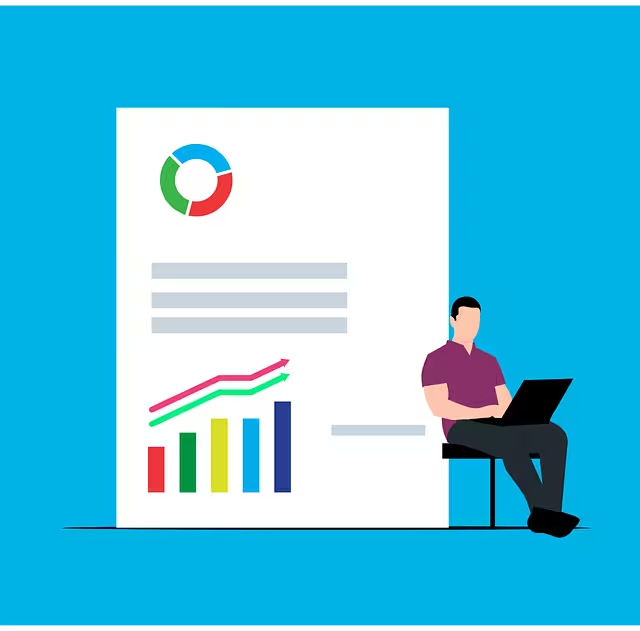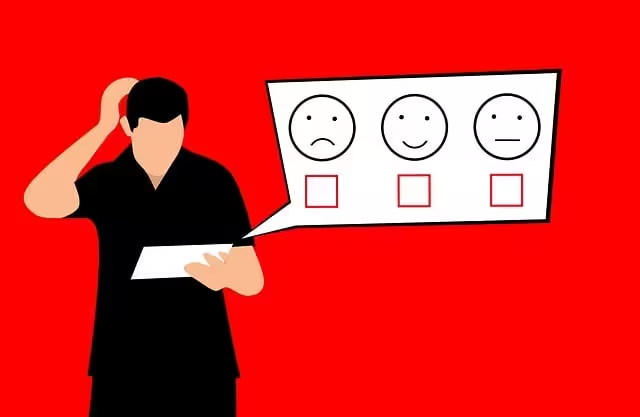Your website for local tourism is attracting visitors. Your search engine optimization (SEO) is working, people are clicking from social media, and your traffic numbers are climbing. Yet, a critical problem persists: your booking calendar remains stubbornly empty. This is the most common frustration I see in the local tourism industry. You have a “leaky bucket.” You are successfully filling the bucket with traffic, but the sales are leaking out before a booking is ever made. High bounce rates, abandoned booking forms, and low conversion rates are symptoms of a deeper issue. Your website is not aligned with what your users actually want.
The solution is not simply to get more traffic. The solution is to understand the traffic you already have. My expertise lies in design and data, and the bridge between them is analysis. Analyzing user behavior on local tourism websites is the essential diagnostic process that stops the guesswork. It allows you to identify every friction point, every confusing button, and every missed opportunity. It is the only way to transform your website from a simple digital brochure into a high-performing booking engine.
This guide provides a complete framework. We will move beyond simple pageviews and dive into the data that matters. I will show you what to measure (the quantitative data), why your users act the way they do (the qualitative data), how to implement the correct tools, and most importantly, what to do with the insights you gather. We will deconstruct the digital path of your potential customer, find where they stumble, and rebuild that path to be seamless, intuitive, and effective.
Table of Contents
The “Why”: Establishing Your Analytical Framework

Before you can analyze anything, you must understand why you are looking at the data. Many website owners get lost in what we call “vanity metrics.” These are numbers that look impressive on a report but do not contribute to your business goals.
A vanity metric is something like “total pageviews” or “number of social media followers.” While high numbers feel good, they do not pay the bills. A million pageviews mean nothing if not one of them turns into a booking. Your local tourism business needs to focus on “actionable metrics,” which are numbers that directly measure behaviors tied to revenue and user satisfaction.
Your analytical framework should be built on three primary goals. Every piece of data you look at should help you improve one of these three areas.
- Increase Conversions: This is the most obvious goal. A conversion is any key action you want a user to take. For a local tourism site, this almost always means a direct booking, a submitted contact form for a private tour, or a phone call.
- Improve User Experience (UX): User experience is the overall feeling a person has when using your website. Is it easy? Is it fast? Is it confusing? A good UX means a visitor can find your tour schedule, see your prices, and understand your cancellation policy without effort or frustration. A bad UX is the number one reason people leave and book with a competitor.
- Understand User Intent: You must understand who is visiting your site and what they want right now. A visitor to a local tourism website typically falls into one of two categories:
- The Planner: This person is likely on a desktop or laptop, perhaps weeks or months before their trip. They are in research mode. They want to see beautiful photos, read detailed itineraries, compare pricing, and look for customer reviews.
- The In-Destination Visitor: This person is likely on a mobile phone. They are already in your city and looking for something to do today. They have a totally different intent. They need to know: “Are you open?”, “Where are you?”, “Do you have tickets for the 2 PM tour?”, and “Can I call you?”.
Your website must serve both of these users, and your analysis must be able to separate them.
To do this, we rely on two core concepts. First is User Journey Mapping. This is the process of outlining every step a customer takes, from first hearing about your local tourism business to completing a booking. Second is Conversion Funnel Analysis. This is the practice of visualizing the specific steps a user must take to complete a conversion, suchas:
- Landed on Homepage
- Viewed the “Tours” page
- Clicked “Book Now”
- Entered Payment Info
- Saw the “Thank You” page
By analyzing this funnel, you can see exactly where most users “drop off.” If 100 people click “Book Now” but only 5 enter their payment info, you have found a massive problem on that specific step. This framework turns vague “analysis” into a focused investigation.
The Quantitative “What”: Key Metrics You Must Track

Quantitative data is the “what.” It is all about the numbers. This data tells you what is happening on your site, how many people are doing it, and where they are coming from. Your primary tool for this will be Google Analytics 4 (GA4), a free and powerful platform.
Many local tourism operators find GA4 intimidating, but you only need to focus on a few key areas. When you ask, “What are the most important metrics for a tourism website?” the answer is found in three categories.
1. Foundational Analytics (Using GA4)
- Traffic Sources: This metric tells you how people are finding your website. Are they coming from an organic Google search? Did they click a link from your Google Business Profile? Are they coming from a social media post? This is critical. If you see 80% of your bookings come from your Google Business Profile, you know you should spend time and money optimizing it. You might also see traffic from referral partners like your local DMO (Destination Marketing Organization) or CVB (Convention and Visitors Bureau).
- Engagement Metrics: This is how GA4 measures user experience.
- Engaged Sessions vs. Bounce Rate: In the past, “bounce rate” (a user views one page and leaves) was seen as a bad thing. But for a local tourism site, it can be misleading. A user might land on your site, find your phone number, and call you to book. That is a bounce, but it is also a successful conversion! GA4 now prefers “Engaged Sessions.” This measures users who stay for more than 10 seconds, view more than one page, or complete a conversion event. You want more engaged sessions.
- Average Session Duration: This is simply how long the average visitor stays on your site. If your “Planners” are only staying for 15 seconds, they are not finding the deep information they need.
- Conversion Metrics: This is the data that matters most.
- Conversion Rate (CR): This is the percentage of your total visitors who complete a goal (like a booking). This is your single most important health metric. A typical conversion rate for local tourism is between 1-3%. A small increase from 1% to 2% is a 100% increase in your revenue.
- Booking Funnel Drop-off: As mentioned earlier, this is where you track your sales funnel. GA4 allows you to build a visual report. You might see: 1,000 users viewed a tour. 100 added it to the cart. 50 started checkout. 20 completed the purchase. This tells you your checkout process is where you are losing the most money.
2. Critical Segmentation: Device and Demographics
Averages lie. The most valuable data is found when you “segment” it, which is just a fancy word for filtering your audience into groups. The two most important segments for any local tourism business are:
- Mobile vs. Desktop: You must analyze these two groups separately. Your desktop “Planners” will have a different session duration, different popular pages, and a different conversion rate than your mobile “In-Destination” visitors. If your mobile conversion rate is zero, you likely have a technical problem, such as your “Book Now” button being broken on a specific phone.
- Geographic Location: Where are your visitors coming from? If you are a local tourism business in Boston but you see a huge surge of traffic from Ohio, you might consider a small, targeted ad campaign in that state. If you see visitors from non-English-speaking countries, you might test adding a language translation widget to your site.
Quantitative data gives you the map of your website. It shows you the roads, the traffic jams, and the final destinations. But it cannot tell you why a road is jammed. For that, we need to add a human element.
The Qualitative “Why”: Tools for Understanding Intent

Qualitative data is the “why.” If quantitative data is the “what” (the numbers), qualitative data is the “why” (the human reason). This data helps you understand the intent and emotion behind the clicks. It answers the question, “How do I track user behavior on my website in a way that shows me what users are thinking?”
To capture this, we use a different setof tools. Think of it this way: Google Analytics is like a wide-angle survey of 10,000 people. These qualitative tools are like sitting down and watching over the shoulder of three of those people. You will be shocked at what you discover.
1. Visualizing Clicks (Heatmaps)
Heatmaps are one of the most useful tools for understanding user behavior. A heatmap is a visual representation of your website page with a “heat” overlay showing where people click, move their mouse, and scroll.
- Click Maps: These show where users are clicking. You might find they are constantly clicking on an image that is not a link, indicating they expect it to be a link. This is a clear sign of user frustration. You can also see if they are clicking your main “Book Now” button or a less important “About Us” link.
- Scroll Maps: This shows you how far down the page your users are scrolling. You might have your pricing and booking button at the very bottom of the page, but your scroll map shows that 90% of users never scroll past the first photo. This is a game-changing insight. It tells you to move your most important information (the call-to-action, or CTA) “above the fold” (the part of the screen visible without scrolling).
- Tools: Great heatmap tools include Hotjar, Crazy Egg, and the free and excellent Microsoft Clarity.
2. Observing Actions (Session Replays)
This is often the most eye-opening tool for a local tourism business owner. Session replays (or session recordings) are anonymized, real-time recordings of a user’s entire session on your website. You see their mouse movements, their clicks, their scrolling, and where they get stuck.
You can watch a user try to fill out your booking form, fail three times, and then leave your site in frustration. You might see them get stuck in a “loop,” clicking between your “Tours” page and your “FAQ” page, unable to find the one piece of information they need (e.g., “Is this tour wheelchair accessible?”).
You can also identify “rage clicks,” which is when a user clicks repeatedly on the same spot out of frustration. This is a digital scream for help, and it shows you exactly where your site is broken or confusing. Tools like Fullstory, Mouseflow, and Microsoft Clarity all offer this feature.
3. Gathering Direct Feedback (On-Site Surveys)
Sometimes, the easiest way to find out what a user wants is simply to ask them. On-site surveys are small, contextual pop-ups that ask users a simple question.
- Exit-Intent Pop-ups: You can set a survey to appear when a user’s mouse moves to close the browser tab. It can ask, “Before you go, what stopped you from booking today?” The answers will be pure gold: “Your price was too high,” “I could not find the date I wanted,” or “I was just looking.”
- On-Page Polls: You can place a small poll on your “Tour” page that asks, “Did you find the information you were looking for?” A simple “Yes” or “No” can tell you if that page is doing its job.
- Tools: Hotjar Feedback and Qualaroo are excellent for this.
By combining the “what” from GA4 with the “why” from these tools, you move from being a data collector to being a data-driven investigator.
The “How”: Implementing Your Analytics Stack
Now you know what to track and why. This section covers the “how.” How do you physically get these tools onto your website? This may sound highly technical, but the process has become much simpler. We call this group of tools your “analytics stack.”
1. The Quantitative Foundation: Google Analytics 4 (GA4)
Your first step is to ensure GA4 is installed correctly. Most website platforms like WordPress or Shopify have simple plugins or integrations for this. But installation is just step one.
The most critical step is to configure Events and Conversions. An “Event” is any action a user takes. You can create custom events for your local tourism site like click_book_now, form_submit, or click_phone_number. Then, you tell GA4 which of these events are the most important by marking them as “Conversions.”
This simple act transforms GA4 from a passive traffic-counter into an active business tool. You will be able to see exactly which traffic source (e.g., “Google Organic Search”) led to the most “Conversions,” allowing you to focus your marketing budget effectively.
2. The Qualitative Layer: Google Tag Manager (GTM)
This is the professional secret to managing your analytics stack without hiring a developer for every small change. Google Tag Manager (GTM) is a free tool that acts as a “toolbox” or “container” for all your other tracking scripts (called “tags”)
Instead of hard-coding the Hotjar script into your website, and the Microsoft Clarity script, and your Facebook Pixel script (which all slows your site down and is messy), you do this:
- You install GTM one time on your site.
- You then log into your GTM account and add all your other tools inside the GTM container.
This gives you a central dashboard to add, pause, or remove any tracking tool you want. It keeps your website code clean, improves site speed, and gives you full control. For any local tourism business that wants to be serious about data, using GTM is a non-negotiable.
3. Integrating Your Data: The Booking Engine
Here is the final, and most advanced, piece of the puzzle. Most local tourism sites use a third-party booking engine to handle their calendars and payments. These are tools like FareHarbor, Checkfront, or Rezdy.
The problem is that when a user clicks “Book Now,” they are often sent off your website to the booking engine’s domain. In this moment, Google Analytics loses track of them. This is why it is so hard to know which ad or marketing effort actually led to a sale.
To fix this, you must set up “cross-domain tracking” and e-commerce tracking. This connects your GA4 account with your booking engine. Most modern booking engines have guides on how to do this. It is a technical step, but it is the one that unlocks the full picture. When this is set up, you will be ableto log into GA4 and see a report that says: “The Facebook ad you ran last week cost $50 and generated $800 in direct tour bookings.” This is the holy grail of local tourism marketing.
The “Now What”: Translating Data into Actionable Design

You have done the work. Your “analytics stack” is in place. You have collected the “what” (GA4) and the “why” (Hotjar/Clarity). Now you have a pile of data. This is the final and most important step: turning that data into action. This is where we stop being data analysts and become data-driven designers.
1. Build Your User Personas
Your data will allow you to stop guessing and build real user personas. You are no longer designing for “visitors”; you are designing for “Sarah the Planner” and “Mike the In-Destination Tourist.”
- For Sarah the Planner (Desktop): Your quantitative data shows she spends 8 minutes on the site, reads your “About” page, and looks at 10 photos in the gallery. Your qualitative data shows she is looking for trust signals.
- Action: You redesign your tour pages to feature high-quality, biophilic imagery (nature, open spaces) that reduces decision-related stress. You make customer reviews and testimonials prominent. You ensure your “About Us” page tells your story and builds a human connection.
- For Mike the In-Destination Tourist (Mobile): Your data shows he lands on your homepage and immediately bounces. Your session recordings show him on his phone, scrolling furiously, and “rage clicking.” He cannot find your address.
- Action: You redesign your mobile homepage. The very first things at the top of the screen are now:
- A “Click to Call” button.
- Your physical address (linked to Google Maps).
- A “Book Today’s Tours” button.
- Action: You redesign your mobile homepage. The very first things at the top of the screen are now:
You are now serving both users’ needs perfectly, because the data told you exactly what they were.
2. Optimize for Friction (A/B Testing)
This process is also known as Conversion Rate Optimization (CRO). You will use your data to find friction points and then run experiments to fix them. The process is simple:
- Data: Your heatmap shows that only 30% of users scroll down to your booking button.
- Hypothesis: “I believe that moving the booking button to the top of the page will increase clicks and lead to more bookings.”
- Action (A/B Test): You run an experiment. Using a tool, you show 50% of your visitors the old page (Button B) and 50% the new page (Button A). This is called an A/B test.
- Analyze: After a week, you see that Button A (at the top) got 40% more booking clicks. You have a clear winner. You make the change permanent for 100% of your visitors.
You are no longer guessing. You are not changing your website based on your cousin’s opinion. You are making scientific, data-backed decisions that directly increase your revenue.
3. Case Study: The Abandoned Booking Form
Let’s walk through a real-world example that is extremely common for local tourism businesses.
- The Data: Your GA4 funnel report shows that 70% of users who start the checkout process abandon it on the final “Payment” page.
- The Analysis: This is a massive “leak.” You watch 10 session recordings from Microsoft Clarity of users who abandoned at this step. You see the same pattern: the user fills out their name and address. They get to the final page, and suddenly a new “$10.00 Online Booking Fee” appears. You watch as the user’s mouse hesitates, moves back and forth, and then clicks to exit the site.
- The Solution: The problem is not the fee; it is the surprise. It breaks trust at the last second. Your hypothesis is that being transparent will fix this.
- The Action (The Fix): You edit your main “Tours” page to say “Price: $90 ($80 Ticket + $10 Booking Fee).” The price is the same, but the transparency is new.
- The Result: You run the new page. Your funnel abandonment rate drops from 70% to 20%. You have just tripled your bookings from the same amount of traffic, all because you took the time to watch and listen to your users.
This is the power of analyzing user behavior.
From Analysis to a Living Website
Analyzing user behavior on local tourism websites is not a one-time project. It is not a task you complete and check off a list. It is a fundamental shift in how you view your website. Your website is not a static digital billboard; it is a living, breathing sales environment. It is your single most important employee, working 24/7.
The core principle is simple: Your data is the digital voice of your customer. It is your job to listen to it.
Use quantitative tools like Google Analytics 4 to see what is happening at scale. Use qualitative tools like heatmaps and session replays to understand the human story behind those numbers. Combine these insights to find friction. Form a hypothesis. Test your solution. And then repeat the process, forever.
Your journey does not have to be complicated. You can start today. Here is your first step: Install a free tool like Microsoft Clarity. It takes five minutes. Let it run for 48 hours. On Monday morning, pour a cup of coffee and watch just three session recordings of users who left your booking page. I guarantee you will find one actionable insight that will change how you think about your website forever.
I can now help you draft a plan for setting up your Google Analytics 4 conversion events or analyze a specific heatmap from your site. Would you like me to do that?